Eighth Avenue Reservoir
Introduction
Text-to-speech Audio
The massive oval structure on Kirkpatrick Hill, high above Nashville, is the Eighth Avenue Reservoir, built as a city reservoir in the late 1880s. The spot once held Fort Casino, a Civil War fort built in 1863 and occupied by Union forces during the Battle of Nashville in 1864. The reservoir sprang a major leak when a wall collapsed in 1912, causing major damage but no fatalities; since the reservoir held two basins, only half of the water escaped. The Eighth Avenue Reservoir was listed in the National Register of Historic Places in 1978; it is a contributing part of the National Register-listed Omohundro Waterworks Complex thematic resource, too. The reservoir was undergoing further renovation in early 2022 that was projected to take years to complete.
Images
1972 aerial view of Eighth Ave. Reservoir, looking west (Bill King for NRHP)
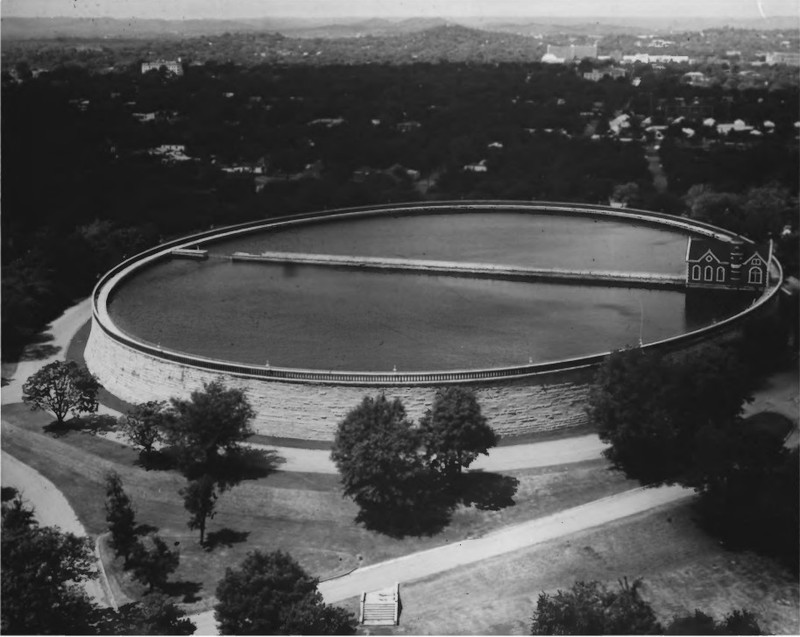
Gatehouse atop the Eight Ave. S. Reservoir in 1986 photo, looking west (Mark Sturtevant for NRHP)
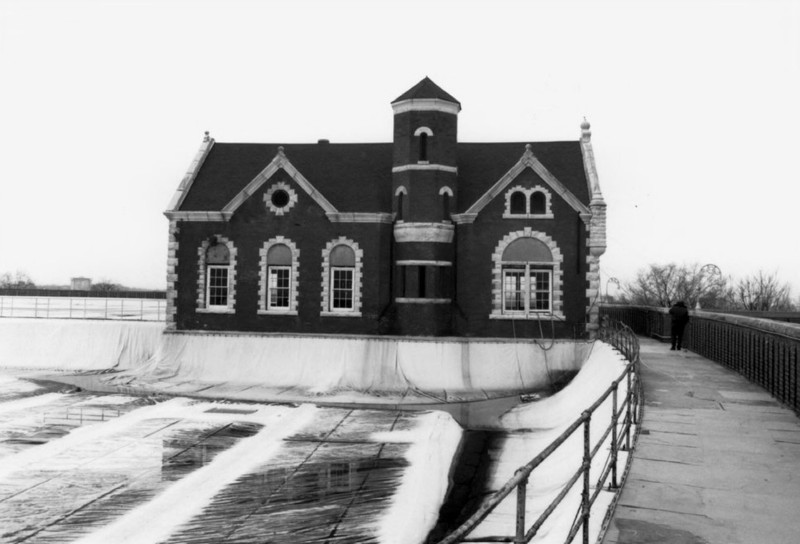
Kirkpatrick Hill (blue arrow) on outskirts of Nashville, on 1877 map by Nashville City Engineer (Wilbur F. Foster)
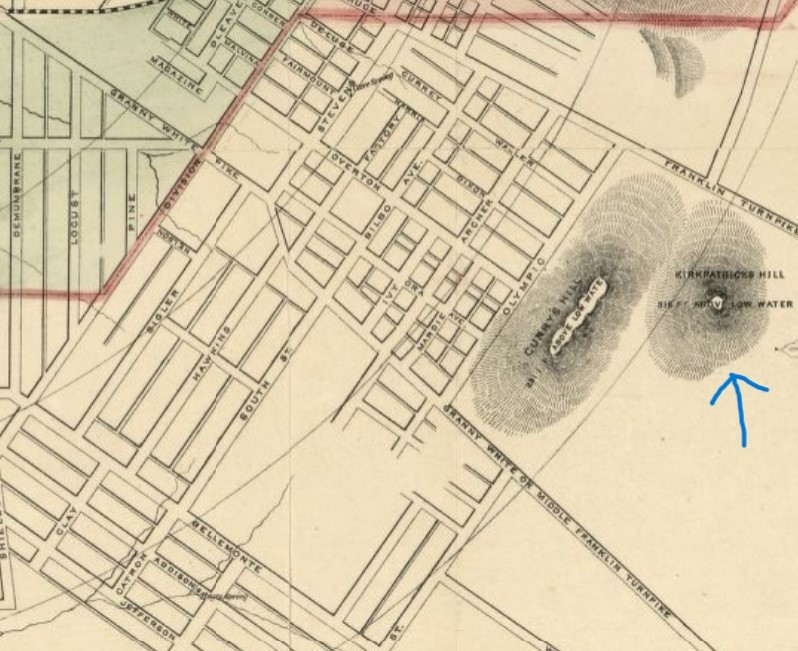
Men standing near damaged wall of reservoir in November 1912 newspaper photo (Nashville Globe p.1)
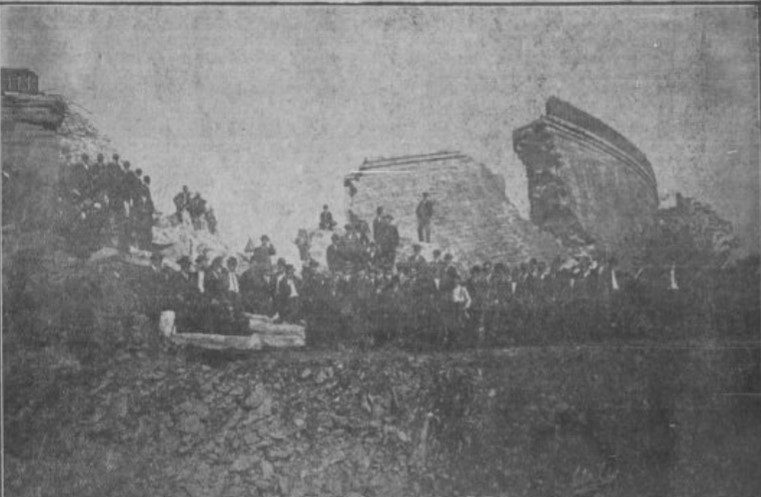
Southeast wall of reservoir repaired from 1912 collapse, view facing northwest in 1986 (Sturtevant)
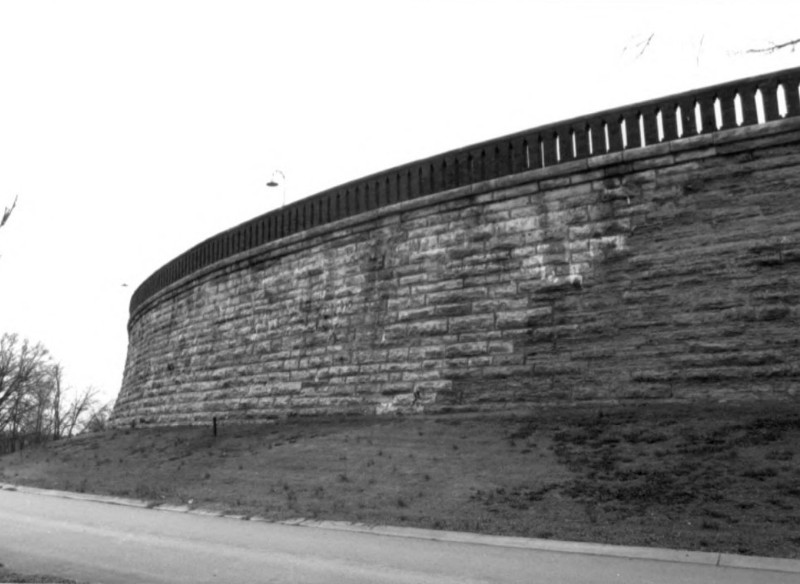
Backstory and Context
Text-to-speech Audio
City of Nashville Engineer J.A. Jowett designed the Eighth Avenue Reservoir. The contractors were Whitsett and Adams for the two-year-long building project for the 50-million-gallon structure at a cost of nearly $365,000. The oval-shaped reservoir is about 600 ft. long by 460 ft. wide and nearly 34 ft. tall. The top of the rubble stone wall is about 9 ft. thick while the bottom is almost 23 ft. thick. The wall was faced with limestone ashlar quarried nearby and topped with a brick parapet. A second wall across the width of the basin cuts the reservoir into two pools. A gatehouse in Romanesque style tops the north wall; the red brick structure is accented with rough-faced limestone details around the arched windows. The roof has six gables with the peaks topped with limestone finials. A small octagonal tower overlooks the basin.
A 36-inch-wide cast iron pipe carried water to one of the reservoir's pools from the Cumberland River, four miles away. A stone arched bridge carried the water across Brown's Creek; until 1925, the bridge also carried Lebanon Road traffic. Once the water settled and mud fell to the bottom of the pool, the water next flowed into the second pool through a weir in the dividing wall's top, for distribution to the city. The process was improved in 1908 by a system to clarify the water through sedimentation and coagulation, followed by a sterilization process in 1909.
On November 5th 1912, a portion of the southeast wall collapsed, releasing 25,000 gallons of water from one of the pools. The break happened after midnight and reportedly sounded like a cyclone as it roared into the neighborhoods south and east of the reservoir. Portions of the stone wall of the reservoir were washed away (see the newspaper photo below). The rushing water lifted frame houses from their foundations and moved them into other houses or trees, smashing walls. Household contents were scattered for blocks and the interiors of homes were covered in mud. Amazingly, no one was killed. That half of the reservoir had been lowered fifteen feet just a few days prior to the break, and visible cracks were patched. Although the reservoir had leaked a bit for years, the thicker walls at the bottom were thought to be secure. The damaged wall was repaired by 1914 by filling the wall with concrete and then rebuilding the wall with the original stone at a cost of $100,000. When some leaks were detected in 1920, both pools were improved by relining and waterproofing.
A floating polyvinyl cover was first used in 1974. The City of Nashville began adding chemicals to purify the water in the 1990s. The reservoir is still in use but only as a purified water storage facility. To keep the water from stagnating, a new tank in tank design was being installed in early 2022 to churn the water. The project is expected to take years to complete.
Sources
Anonymous. "Walls of City Reservoir Break. Two Big Apertures in Massive Structure." Nashville Globe (Nashville) November 8th, 1912. 1-1.
Dalton, Robert E. NRHP Nomination of Eighth Avenue South Reservoir, Nashville, Tennessee. National Register. Washington, DC. National Park Service, 1976.
Davis, Chris. Renovation work underway on the historic Eighth Avenue Reservoir, News Channel 5 Nashville. February 10th, 2022. Accessed August 18th, 2022. https://www.newschannel5.com/news/renovation-work-underway-on-the-historic-eighth-avenue-reservoir.
National Park Service (NPS): https://npgallery.nps.gov/AssetDetail/NRIS/78002578
NPS: https://npgallery.nps.gov/AssetDetail/NRIS/78002578
Library of Congress (LOC): https://www.loc.gov/item/2011590011/
Nashville Globe (defunct newspaper, Nashville, TN), November 8th 1912, p. 1 (LOC American Memory)
NPS: https://npgallery.nps.gov/AssetDetail/NRIS/78002578
